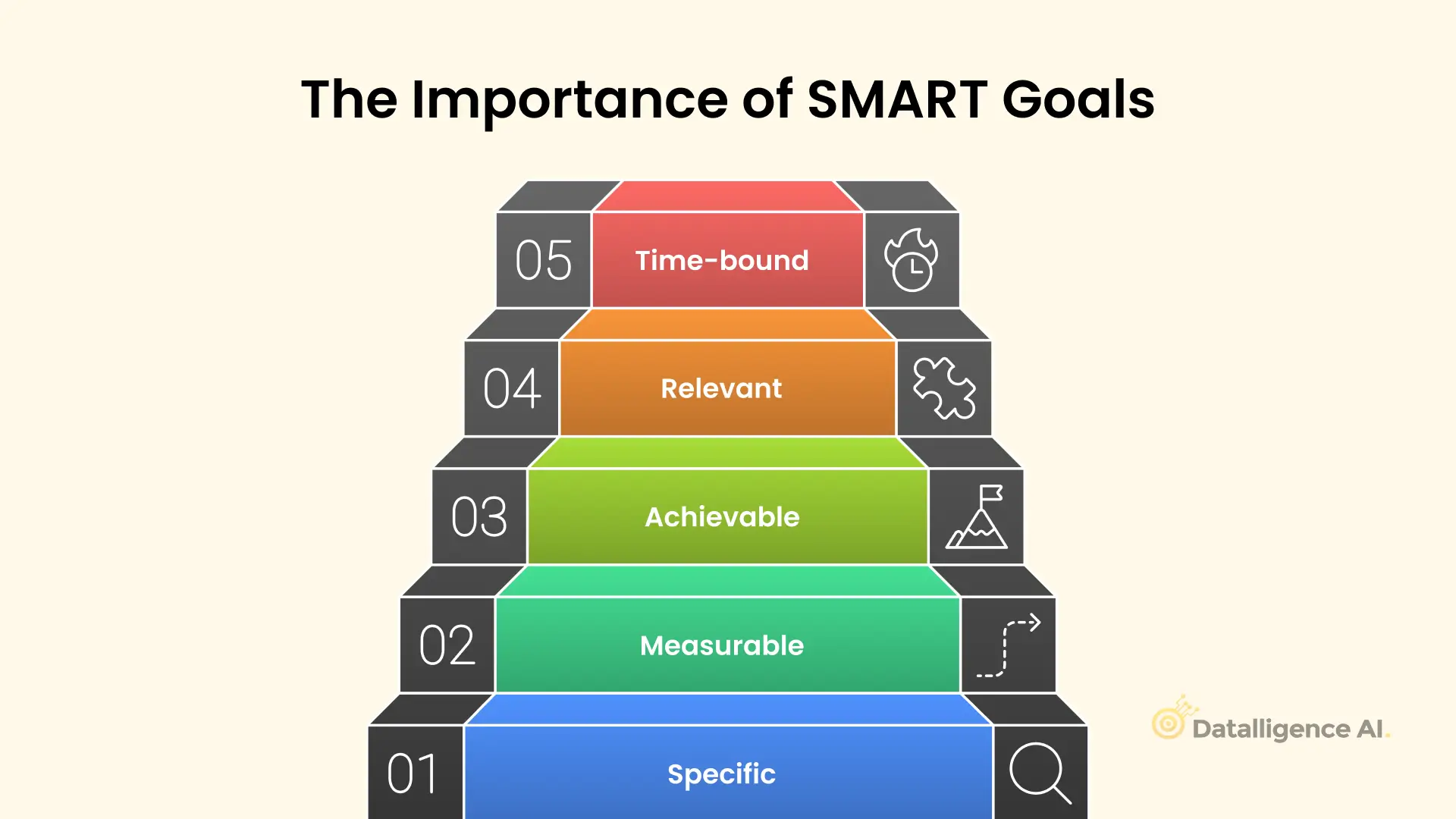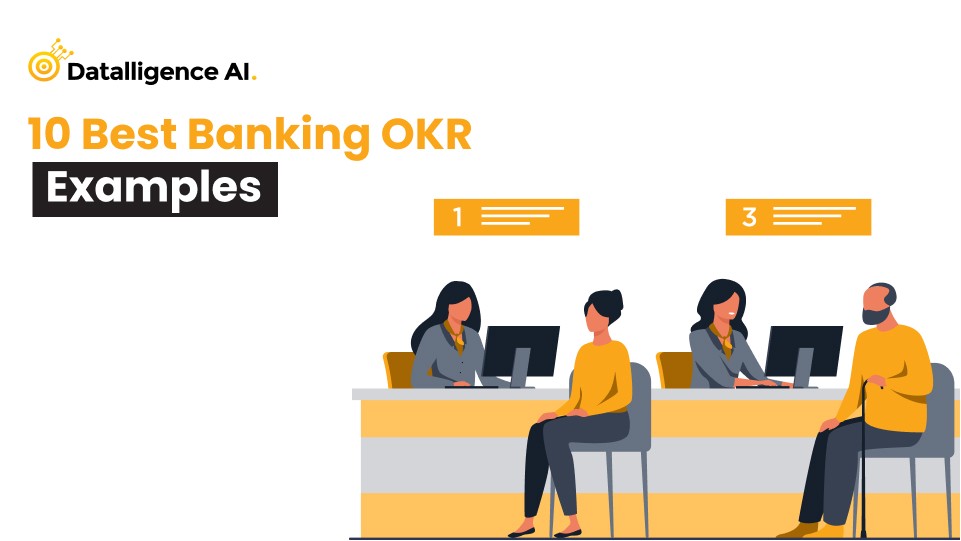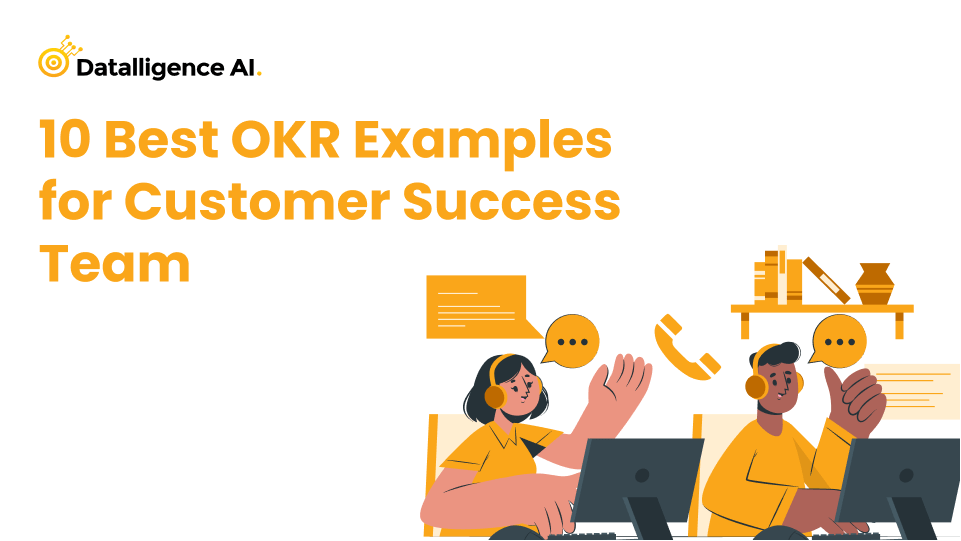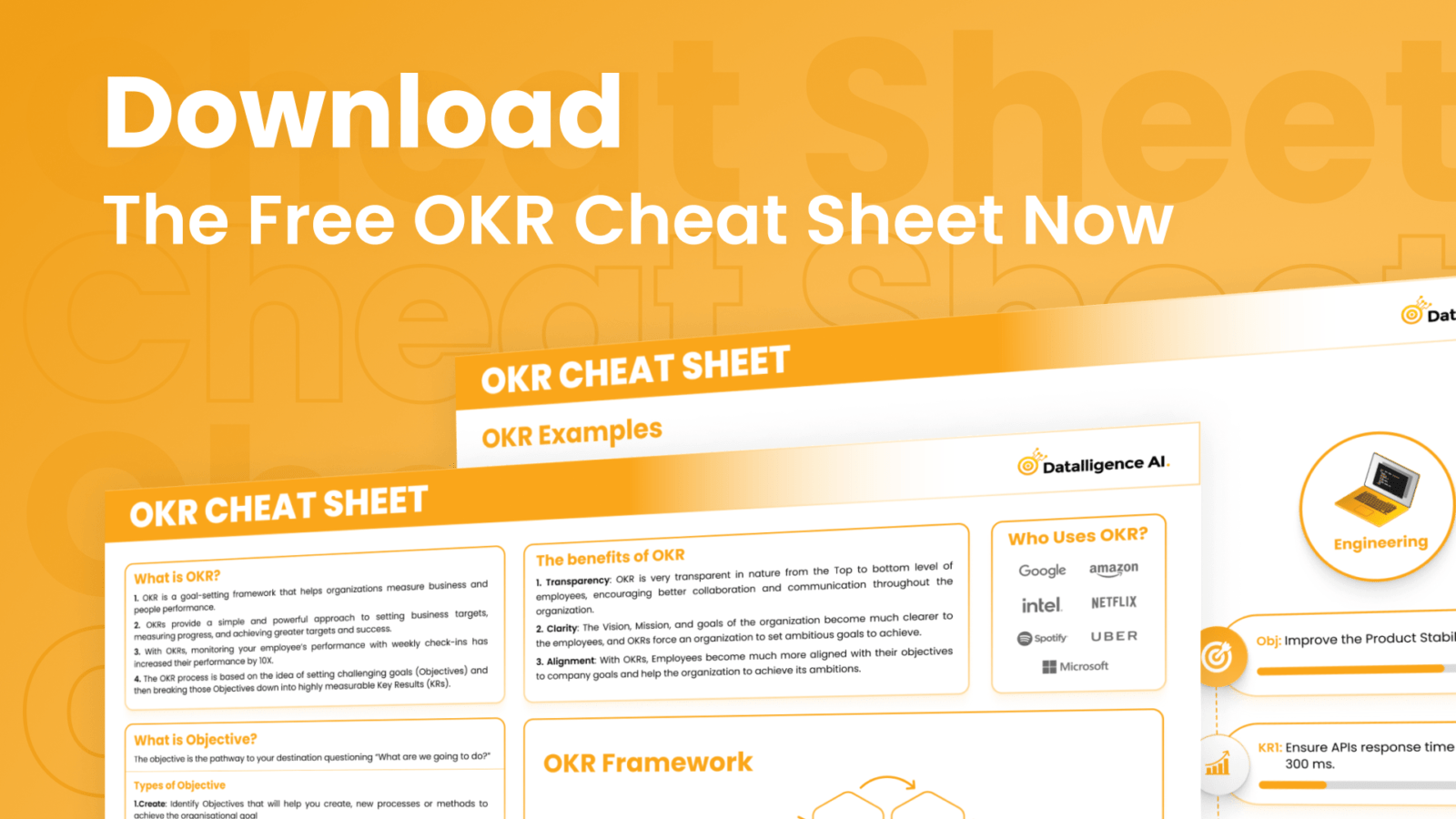In the modern, rapidly changing business landscape, SMART goal setting for professionals is a key for managerial achievement. Establishing well-defined, clear and actionable goals keeps managers to track the tasks and allows teams to work together towards common objectives and organizational goals. Although most managers understand the importance of goals, effective implementation involves having the appropriate strategies, tools, and frameworks.
One of the most effective methods is the SMART professional goal setting framework which stands for Specific, Measurable, Achievable, Relevant, and Time-bound. This structured approach empowers managers to create realistic objectives aligned with their organization’s mission and vision, offering a powerful tool for business leadership.  When combined with the right goal management software, SMART goals can take on a new level of effectiveness. With real-time tracking, collaboration tools, and data-driven insights, modern goal-setting platforms allow managers to monitor progress, make data-informed decisions, and keep their teams engaged.
When combined with the right goal management software, SMART goals can take on a new level of effectiveness. With real-time tracking, collaboration tools, and data-driven insights, modern goal-setting platforms allow managers to monitor progress, make data-informed decisions, and keep their teams engaged.
Here, we’ll explore ten crucial SMART Professional goals every manager should implement, using the SMART professional goal setting framework as our foundation. You’ll also discover modern tools that enhance tracking capabilities and review practical OKR examples to guide your team toward success.
The Importance of SMART Goals
 Before discussing particular examples, here's why the SMART framework for professional goal setting continues to be one of the most useful management strategies:
Before discussing particular examples, here's why the SMART framework for professional goal setting continues to be one of the most useful management strategies:
- Specific: Clearly worded goals eliminate confusion and direct team efforts.
- Measurable: Quantifiable results facilitate progress over time monitoring.
- Achievable: Having realistic goals ensures sustained team motivation.
- Relevant: Placing goals within company objectives delivers meaningful results.
- Time-bound: Timelines create urgency and enable proper prioritization. It also ensures that progress is evaluated regularly to make necessary adjustments.
Used consistently, SMART goal setting instills alignment, clarity, and accountability—making it a staple of any high-performing manager's arsenal.
Table of Contents
1. Employee Performance and Development
One of the top priorities for any manager is staff development. When constructed with the SMART professional goal setting process, performance objectives become more actionable and quantifiable.
Goal: Increase team performance metrics by 25% within 6 months through regular one-on-one meetings and leveraging performance tracking software.
This goal can be broken down into specific OKRs (Objectives and Key Results)
Objective: Improve team performance through consistent feedback and development.
- Key Result 1: Increase team performance metrics by 25% within 6 months.
- Key Result 2: Implement weekly one-on-one meetings for 100% of the team.
- Key Result 3: Achieve a 90% employee satisfaction rate from feedback surveys.
To achieve this goal, managers should use performance management software that offers real-time monitoring of key performance indicators (KPIs) and allows for performance reviews and feedback. Tools that track individual contributions and team metrics can help identify strengths and areas for improvement, ensuring that the team is on track to meet its performance targets. Moreover, software that schedules and tracks one-on-one meetings can make the process more structured, ensuring that every team member receives the necessary support and feedback. With documented meetings, managers can provide actionable insights, track progress over time, and keep employees engaged and accountable for their goals.
2. Revenue Growth and Sales Targets
For most organizations, revenue growth is a key indicator of success. As a manager, setting a revenue-related SMART goal is crucial to ensure that the team is focused on driving sales and increasing business outcomes.
Goal: Achieve a 30% increase in quarterly revenue through effective sales strategies and pipeline management. This goal can be translated into OKRs as follows:
Objective: Drive revenue growth by optimizing sales strategies and performance.
- Key Result 1: Achieve a 30% increase in quarterly revenue by the end of Q2.
- Key Result 2: Increase new customer acquisition by 20% within 3 months.
- Key Result 3: Improve sales conversion rate from 15% to 20% within 6 months.
Revenue growth requires not just increasing sales but also optimizing sales processes, refining strategies, and ensuring that the sales team is properly equipped. Sales forecasting and pipeline management software can help track these OKRs by offering real-time insights into sales performance and customer acquisition trends. With modern software, managers can monitor the performance of each salesperson, track their progress against set sales targets, and adjust strategies as needed. Additionally, these platforms allow managers to identify underperforming areas in the sales process, enabling them to provide coaching and resources where necessary. Having a clear, measurable goal like this helps focus the team’s efforts and aligns them with broader organizational objectives.
3. Customer Satisfaction Improvement
In today’s competitive business environment, customer satisfaction is paramount. Satisfied customers are more likely to become repeat buyers, refer others, and increase revenue. As a manager, focusing on customer satisfaction is essential for long-term success.
Goal: Increase customer satisfaction from 85% to 95% within 4 months through proactive feedback gathering and issue resolution. This goal can be broken down into OKRs:
Objective: Enhance customer satisfaction by improving service quality and responsiveness.
- Key Result 1: Increase customer satisfaction score from 85% to 95% within 4 months.
- Key Result 2: Resolve 90% of customer complaints within 48 hours.
- Key Result 3: Achieve a Net Promoter Score (NPS) of 50 or higher.
To achieve these OKRs, managers should leverage customer feedback software that enables them to track satisfaction levels, gather real-time feedback, and identify trends in customer sentiment. These platforms allow managers to monitor how well the team is handling customer issues, ensuring that complaints are resolved quickly and effectively. By using a customer satisfaction platform, managers can receive alerts when customer issues arise, helping them respond promptly. Furthermore, the platform can provide insights into areas where improvements are needed, helping managers develop targeted strategies to boost satisfaction. Ensuring that the team responds to customer concerns quickly and effectively is key to meeting the desired satisfaction scores. 
4. Cost Reduction and Budget Management
Efficient budget management is an ongoing responsibility for any manager, particularly in a fast-moving business environment where resources need to be allocated efficiently. A SMART goal focused on cost reduction and financial discipline is essential for maintaining profitability.
Goal: Reduce departmental operating costs by 15% over 6 months through efficient expense tracking and resource optimization. This goal can be translated into the following OKRs:
Objective: Improve financial efficiency by reducing operating costs and optimizing resource allocation.
- Key Result 1: Reduce departmental operating costs by 15% over 6 months.
- Key Result 2: Implement automated expense tracking tools for all team projects.
- Key Result 3: Conduct monthly budget reviews to ensure costs are within allocated limits.
Expense management software is vital for managers aiming to reduce costs while maintaining the quality of service. These tools allow for detailed tracking of expenses, providing managers with real-time data to identify areas where spending can be minimized. Automated reports simplify the review process, allowing for quicker identification of unnecessary costs and enabling managers to make adjustments on the fly. By setting clear cost reduction targets and monitoring spending using software, managers can ensure that they stay within budget while driving operational efficiency.
5. Team Productivity Enhancement
Productivity is one of the most important metrics for any team. Enhancing productivity leads to higher efficiency, improved team morale, and better overall results. Managers need to set clear, actionable goals for improving productivity.
Goal: Boost team productivity by 40% within 3 months through better task management and workflow optimization. This goal can be broken down into OKRs:
Objective: Increase team productivity by optimizing processes and eliminating bottlenecks.
- Key Result 1: Increase team productivity by 40% within 3 months.
- Key Result 2: Implement task management software to streamline workflow.
- Key Result 3: Reduce task completion time by 20% for all team members.
Project management software can help track tasks, streamline workflows, and monitor productivity in real-time. These tools provide a centralized platform for managing projects, ensuring that team members are aligned with their tasks and deadlines. Features like time tracking, task prioritization, and collaboration tools make it easier for managers to identify productivity bottlenecks and adjust processes to improve team efficiency.
How Does OKR Power the Goal-Setting Framework?
When there are to-do lists galore, back-to-back meetings, and priorities that change daily, it is simple for teams to lose focus on what counts. That's where OKRs — Objectives and Key Results — come in like a superhero of goal-setting. From Silicon Valley's birth to Google, LinkedIn, and Spotify's adoption, OKRs have revolutionized how businesses set and slay goals. What's behind OKR's strength as a goal-setting framework? Let's dive in.
What Is OKR, Really?
OKR is an abbreviation for Objectives and Key Results. Consider this:
OKR = Objectives + Key Results
Objective = What you aim to do. It must be bold, concise, and motivating.
Key Results = How you will track progress towards that goal? These are specific, time-sensitive, and quantifiable.
For instance:
Objective: Be the best-rated customer support group in the industry.
Key Results:
Reach 95% customer satisfaction rate.
Cut the average response time to less than 2 minutes.
Close to 90% of problems in the first contact.
This approach turns large aspirations into a game plan — with scorecards.
Why Old Goal-Setting Is Inadequate?
Old goal-setting has a tendency to center around generic aspirations: "Do better," "Sell more," or "Improve quality." These goals are fine-sounding, but they are too open to interpretation. More significantly, they don't provide teams with a clear definition of how success will be measured.
Enter OKRs. They remove the fluff from goal-setting and substitute focus, alignment, and accountability.
The Power of OKRs: More Than Just Numbers
Focus That Cuts Through the Noise
OKRs make you prioritize. Teams usually set only 3–5 objectives per quarter, with 2–4 key results each. Having a finite number guarantees you're not working on everything — just the most important things. The payoff? Less busywork, more impact.
Alignment That Gets Everyone Moving in the Same Direction
One of the strongest features of OKRs is the way that they cascade through an organization. When a firm establishes high-level OKRs, departments and individuals can develop their own OKRs that align with the upper-level goals. This establishes transparency and unity — everyone has something they're working for and why.
Measurability That Builds Accountability
Key Results are quantifiable. You're either meeting them or you're not. This precision removes ambiguity and makes it easy to monitor progress over time. No more wondering if you're "doing great" — the numbers talk.
Agility in a Fast-Changing World
OKRs are usually established on a quarterly basis, keeping organizations nimble. You're not committed to a year's worth of planning that can render the plan useless next month. OKRs provide you with the agility to make corrections while still targeting bold outcomes.
OKR: More Than a Buzzword
OKRs aren't magic, but they come close when implemented well. They establish a cycle of goal-setting that combines ambition and structure, and creativity and clarity. If you're leading a startup, or a part of a huge enterprise, OKRs can redefine the way you work — from chaos to clarity.
Next time you're setting goals, avoid the woolly resolutions. Opt for OKRs, and empower your goals to actually deliver. Book your FREE DEMO today!
Implementing Your Goals with Goal Setting Software
The journey toward achieving these SMART goals becomes more manageable with the right goal-setting software. These platforms offer essential features like goal tracking, performance analytics, collaboration tools, and automated reporting. When selecting a solution, consider factors such as mobile accessibility, real-time updates, and integration capabilities with existing systems. Success in implementing these goals requires consistent monitoring and adjustment. Regular review sessions, supported by software analytics, help maintain momentum while identifying areas for improvement. Team engagement plays a crucial role, with transparent progress sharing and milestone celebrations helping maintain motivation and focus.
Conclusion
Setting and achieving SMART goals is a fundamental aspect of managerial success. By leveraging modern goal-setting software and following a structured approach to implementation, managers can create clear pathways to success while maintaining accountability and tracking progress effectively. SMART goals, when paired with powerful SMART goal setting tool, offer managers the opportunity to streamline their operations.










